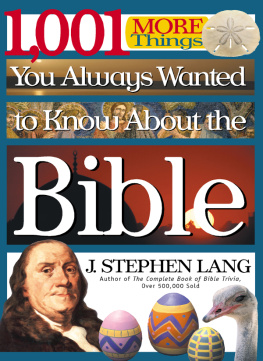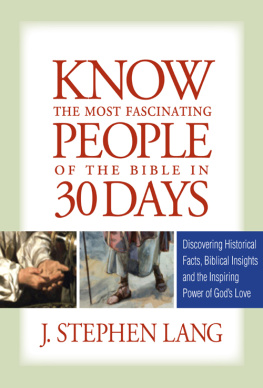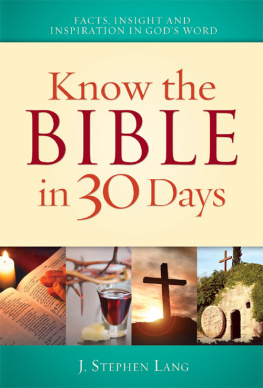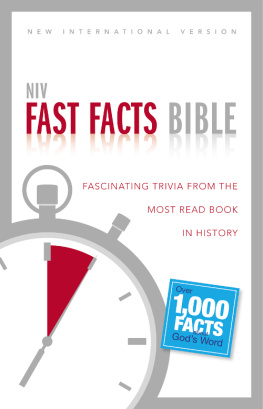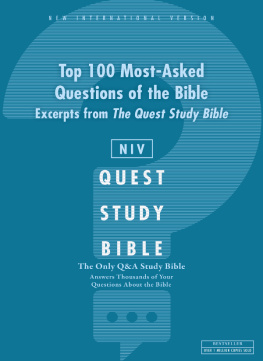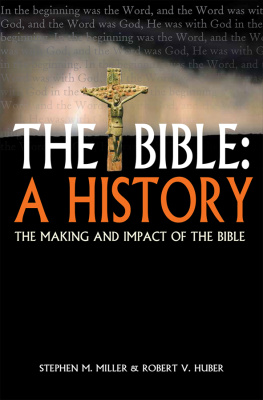Also by J. Stephen Lang
from Thomas Nelson Publishers
1
So Many Legends
1. colored eggs at Easter
No, the Bible has nothing whatever to say about Easter eggs. But there is an old legend connected with Simon of Cyrene, the man forced by the Romans to carry Jesus cross to Calvary (Mark 15:21). Legend has it that Simon was an egg merchant, and when he returned from seeing the Crucifixion, he found that all the eggs in his produce basket had miraculously turned a variety of bright colors. In an alternate version of the story, his eggs did not take on their beautiful coloring until the day of Christs resurrection Easter, that is.
2. King Arthur and the Last Supper table
There may have been a King Arthur in Britains distant past, but mostly he was pure legend. Arthur may have started out in the stories as a pagan chieftain, but eventually a lot of biblical imagery came to be associated with him. According to one legend, Arthurs amazing spear (named Ron, believe it or not) was the spear used by the Roman soldier to pierce the side of Jesus on the cross. Another legend: Arthurs sword Excalibur was the sword used to behead John the Baptist. And still another: the famous Round Table used by Arthur and his knights was actually the table used by Jesus and His disciples at the Last Supper.
3. the wandering Jew
One of the more somber legends connected with Christ is the old story that on His way to His crucifixion, He was heckled and slapped by a spiteful old Jew who told him to move along faster. Christ replied, the story goes, by saying, I go, but you tarry until I come again. Thus the surly Jew was doomed to walk the earth as a remorseful outcast until the second coming of Christ. In the story, widely spread in the Middle Ages and afterward, he is sometimes called Ahasuerus, sometimes Cartiphilus. In some versions of the story he was a servant of Pilates. In all versions, his punishment is seen as a symbol of the Jews rejecting Jesus as their Messiah. Wandering Jew is best known to people today as the common name for Zebrina pendula, a popular garden vine.
4. the lions cubs
Many animals, such as cats, are born blind (or, more accurately, with their eyes closed). An old legend has it that lion cubs are actually born dead, but come to life on the third day when the father lion breathes life into them. Tradition makes this a symbol of Christ, who came to life after the third day in the grave.
5. the donkeys cross
The donkey is a much-mentioned Bible creature, notable in the life of Jesus for being the beast that carried Him into Jerusalem. Some people discern a sort of crossshaped mark on the donkeys shoulders, which is, they say, a symbol of having carried Christ.
6. robin redbreast
People have vivid imaginations. In answer to the question Why does the robin have a red breast? folk wisdom came up with this answer: a robin picked a thorn from the crown of thorns on Jesus head, and a spurt of blood from Jesus dyed the birds breast red, which has remained so ever since.
7. why the aspen quakes
What wood was Jesus cross made of? No one knows. The lovely trees of the American West known as quaking aspens are said to quake in shame because Jesus cross was made from aspen wood.
8. Judas and the redbud
According to legend the blossoms of the redbud tree are red (either from shame or from blood) because it is the tree on which Judas Iscariot hanged himself. (For the record, the trees flowers are really more lavender or pink than red.) The tree is the state tree of Oklahoma, and became so only after state forestry officials convinced ladies garden clubs that the redbud was not the tree Judas hung from (since it grows in America, not Israel).
9. the dogwood legend
People love the white and pink blossoms of the dogwood tree. The trees rarely grow to be more than twenty feet tall, and their branches spread more horizontally than vertically, making them a popular tree for lawns. Legend has it that in the past the dogwood grew as tall as the mighty oak, and its sturdy wood was used for the cross on which Jesus was crucified. After this, the tree (out of shame, some say) never again grew tall and straight but grew low, with narrow, twisting branches that could never be made into the beams of a cross.
10. the man in the moon
For centuries people have thought that the full moon resembles a human face, and many legends have sprung up about who the man in the moon is. One legend that circulated widely was that he was the Israelite mentioned in Numbers 15:3236: because he broke the law of Moses by gathering sticks on the Sabbath, he was stoned to death by the people. His forlorn face became the man in the moon.
11. no three kings in the Bible
Nativity scenes usually depict the wise men (or Magi) of Christmas as three kings, as does the popular song We Three Kings of Orient Are. But this is legend, not the Bible. The story in Matthews gospel gives no hint that the wise men were kings, only that they were seeking the newborn king of the Jews, that is, the baby Jesus. Later legend had it that they were kings themselves, paying their respects to a greater king than they. And, strictly speaking, the wise men dont belong in the Nativity scene at all; they came later than the shepherds, when Joseph, Mary, and the baby were no longer in a stable but in a house (Matt. 2:11).

